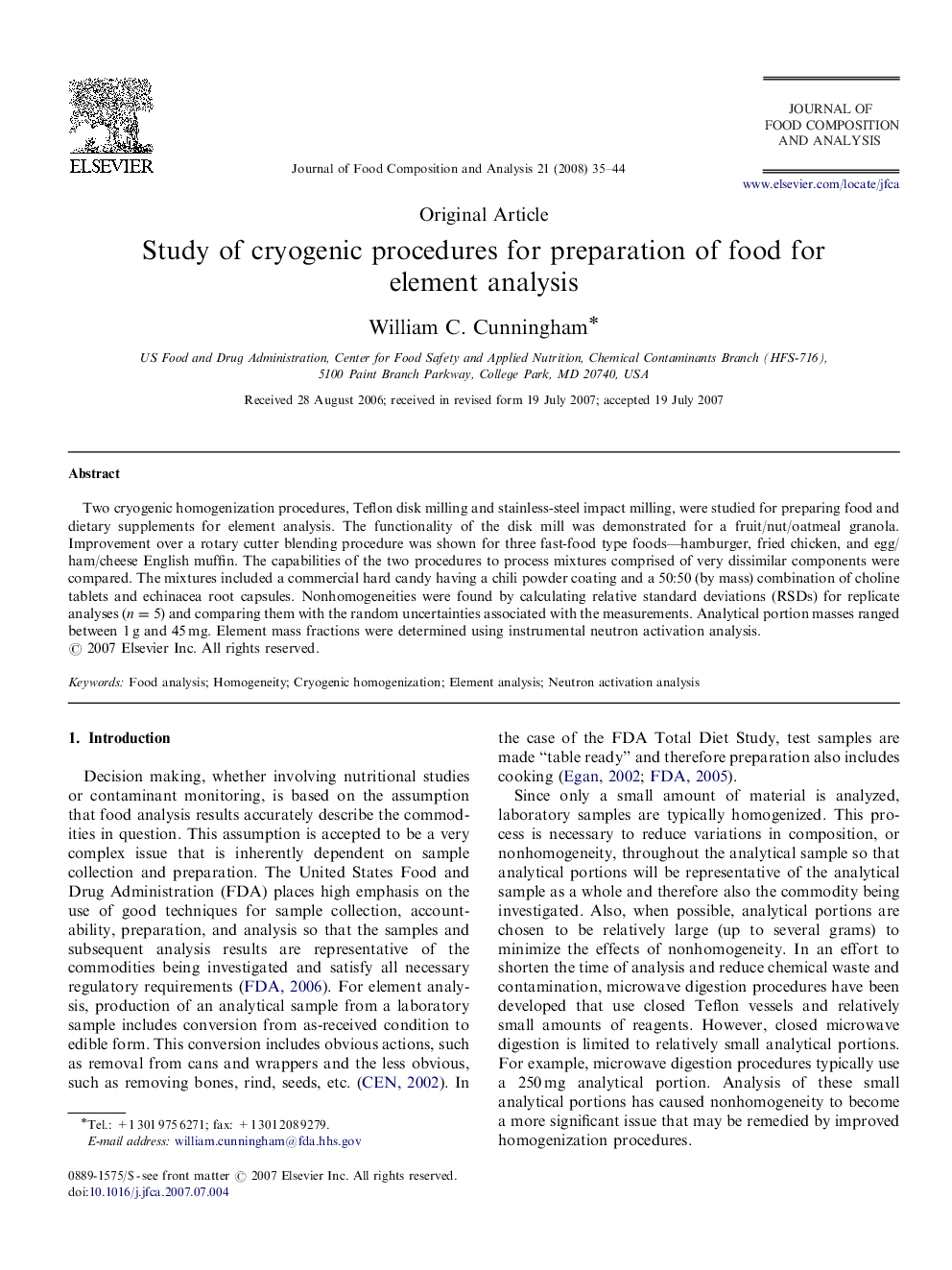| Article ID | Journal | Published Year | Pages | File Type |
|---|---|---|---|---|
| 1219056 | Journal of Food Composition and Analysis | 2008 | 10 Pages |
Two cryogenic homogenization procedures, Teflon disk milling and stainless-steel impact milling, were studied for preparing food and dietary supplements for element analysis. The functionality of the disk mill was demonstrated for a fruit/nut/oatmeal granola. Improvement over a rotary cutter blending procedure was shown for three fast-food type foods—hamburger, fried chicken, and egg/ham/cheese English muffin. The capabilities of the two procedures to process mixtures comprised of very dissimilar components were compared. The mixtures included a commercial hard candy having a chili powder coating and a 50:50 (by mass) combination of choline tablets and echinacea root capsules. Nonhomogeneities were found by calculating relative standard deviations (RSDs) for replicate analyses (n=5) and comparing them with the random uncertainties associated with the measurements. Analytical portion masses ranged between 1 g and 45 mg. Element mass fractions were determined using instrumental neutron activation analysis.
